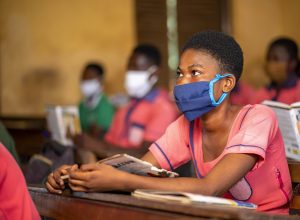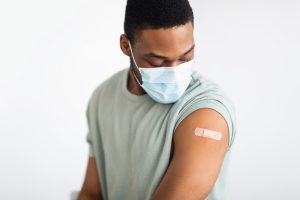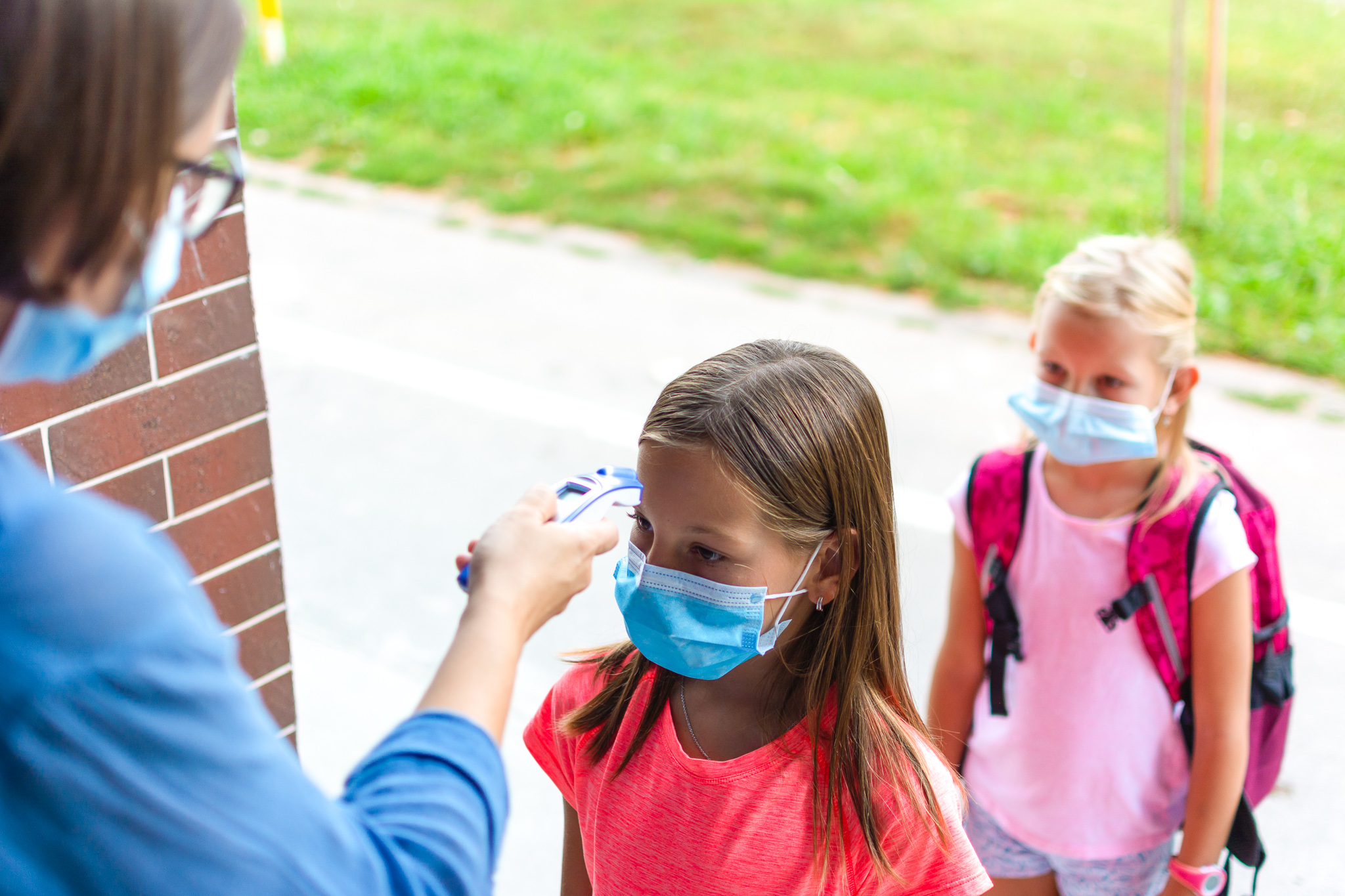COVID-19 back to school Q&A: Is it safe for unvaccinated children to go to school in person? Is the harm of school closures greater than the risk of the virus?
This article is reprinted from ![]() which we urge you to read by clicking here.
which we urge you to read by clicking here.
Authors:
Back-to-school is here again. While we might hope that beginning the academic year with schools open for in-person learning would set the trend for the rest of the year, the presence of new variants of SARS-CoV-2, the virus that causes COVID-19, makes everything less certain.
Some parents have already made decisions to keep their children home for online learning when schools open. Others may revisit these choices as the fall unfolds. Yet many parents also need to go with what their school systems offer.
With over a year’s worth of data on how SARS-CoV-2 infection and disease manifest in children and our experience from last year’s school closures, we can at least answer some important questions about the risks of infection in unvaccinated children and the risks of missing in-person school.
What are the risks of SARS-CoV-2 infection in unvaccinated children?
Children infected with SARS-CoV-2 may be asymptomatic. A review of several studies found that roughly half of infected children did not show any symptoms. A study of children in Alberta found that one-third of those infected were asymptomatic.
Children with COVID-19 symptoms, in general, have a mild illness.
A large study in the United Kingdom, that included data up to February 2021, showed that when children aged five to 11 have symptoms, these tend to last five days. In 3.1 per cent of this age group, symptoms last longer than 28 days. This duration can be compared with people aged 12 to 17, and adults: 5.1 per cent of the former had symptoms for longer than 28 days; 13.3 per cent of adults had symptoms one month after infection. Only six of 445 younger children (1.3 per cent) included in the U.K. study had symptoms that lasted longer than 56 days.
In children, the risk of hospitalization, severe disease and death is low, relative to adults.
Read more: Now everyone’s a statistician. Here’s what armchair COVID experts are getting wrong
In the United States, 0.2 to 1.9 per cent of COVID-19 cases detected in children led to hospitalization, including children infected with the now-circulating Delta variant.
children infected with the now-circulating Delta variant.
In Belgium, hospitalization rates and admission to intensive care units for children with COVID-19 have been low, and haven’t changed while new variants have been circulating. A Belgian school study showed that in June 2021, 15.4 per cent of Belgian elementary school children had antibodies to SARS-CoV-2, meaning they had already been infected with the novel coronavirus some time during the pandemic.
Delta constitutes more than 75 per cent of the sequenced cases since July 5, 2021, in Belgium, and almost all cases in the country as of Aug. 16.
In Canada, 0.5 per cent of the detected and recorded cases in children under 19 years old have led to hospitalization, and 0.06 per cent to admission to the pediatric intensive care unit, since the start of the pandemic.
Research suggests that the multisystem inflammatory syndrome in children (MIS-C), presenting two to six weeks after infection and affecting mostly children aged six to nine, remains rare, with an incidence of three MIS-C cases per 10,000 SARS-CoV-2 infections in people younger than 21. Canadian research awaiting peer-review and research from the U.S. show that the child generally recovers rapidly from an MIS-C episode.
As the pandemic evolves, combining multiple data sources will give us a more valid and precise calculation of risk related to children’s infection and illness.
Is it safe for unvaccinated children to go back to in-person school with the variants circulating?
In the U.S., the number of pediatric cases of COVID-19 has increased in recent weeks.
Pediatric cases have also increased as a proportion of the total number of all detected cases and accounted for 22.4 per cent of total cumulative cases for the week ending Aug. 19 (up from 14.6 per cent a week earlier). This is occurring, however, in the context of high community transmission and low vaccination coverage.
When more children get infected, there are more opportunities to have children become ill and more severely ill, both with acute infection and MIS-C, even if this absolute risk is small. The mortality rate of COVID-19 in children under 17 is less than three deaths per 10,000 cases.
Public Health Canada data show a mortality of one per 20,000 in children under 19.
What’s the bigger risk: COVID-19 or school closures?
For children, the risks associated with school closures have surpassed the health risks associated with COVID-19.
Schools provide instruction that allows students to gain academic skills, but they also help socialize students and teach behavioural skills. Schools provide social support and favour the acquisition of healthy habits. Schools can help immigrant children learn new languages and/or foster integration into their new communities.
Research shows that long school interruptions have both short-term and long-term negative impacts on the development of students’ academic skills and academic achievement, and on how they fare with employment in adulthood.
The negative impacts of school closures can even be transmitted to the next generation.
School closures during this pandemic in Belgium and the Netherlands had negative impacts on kids’ learning, with children in vulnerable households more severely affected.
What effects do school closures have on physical and mental health?

The experience of last year’s confinement and school closures provided data on its negative effect on children’s physical health. Increased numbers of children developed eating disorders and weight problems.
Physical activity decreased in Canadian youth. Screen time was up. Excessive screen time is associated with a sedentary lifestyle and with cardiovascular disease risk factors like high blood pressure, insulin resistance and obesity. School meal programs that ordinarily offer some protection against children’s hunger and malnutrition were not available during the pandemic.
Confinement also affected young children’s mental health.
A recently published review of several studies on children’s mental health estimated that anxiety affected a quarter of children and that one-in-five were depressed during the pandemic, which is twice the pre-pandemic rate.
Read more: Child and youth mental health problems have doubled during COVID-19
We also know that reporting of child abuse went down during school closures, not because these events did not occur, but because teachers and school staff didn’t have the opportunity to detect and report abuse.
Can virtual schooling replace in-person education?
There is limited research on children and full virtual schooling, but neither preliminary nor peer-reviewed research suggest that virtual schooling can fully and adequately compensate for in-person schooling.
School closures put children’s physical, mental and academic development at risk and displace many children from the optimal environment to develop social skills and receive support.
In-person schooling is essential for schools to achieve their diverse objectives and for the well-being of children, especially vulnerable children.
This doesn’t mean we can’t embrace the positive aspects of online learning, or design education that looks different from what we have today. However, including children in decision-making and designing the school environments and experiences that meet their needs — and having equity in mind — should be equally high on our agenda.
![]()
Joanna-Trees Merckx, is a Lecturer, Department of Epidemiology, Biostatistics and Occupational Health McGill University;
Catherine Haeck is Full Professor, Economics Department, Université du Québec à Montréal (UQAM);
Dimitri Van der Linden is Clinical professor, Pediatric Department, Université catholique de Louvain,
Jay Kaufman, is Professor, Department of Epidemiology, Biostatistics and Occupational Health, McGill University
This article is republished from The Conversation under a Creative Commons license. Read the original article.
Disclosure statement
Joanna-Trees Merckx receives funding as a consultant for Belgian Public Health as a co-investigator in the Belgian school SARS-CoV-2 seroprevalence studies. She was an employee of bioMérieux Canada, inc. a diagnostic company, until July 31, 2021. This work is independent of her prior appointment within medical affairs in this organization.
Catherine Haeck receives funding from Fonds de recherche du Québec and Conseil de recherche en sciences humaines.
Dimitri Van der Linden is one of the investigators of DYNATRACS, a study on dynamic of SARS-CoV-2 transmission in schools in Belgium. This study is funded by Fédération Wallonie-Bruxelles (FWB). Dimitri Van der Linden does not receive any personal payment for this study. Dimitri Van der Linden receives payment from the Belgian government for expert meetings related to SARS-Cov-2 crisis management strategy. Dimitri Van der Linden is the french-speaking spokesperson of the Belgian Covid-19 pediatric task force, independent non funded organization.
Jay Kaufman does not work for, consult, own shares in or receive funding from any company or organisation that would benefit from this article, and has disclosed no relevant affiliations beyond their academic appointment.

